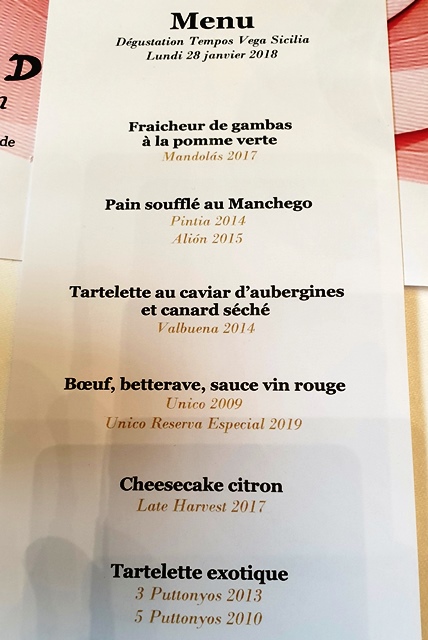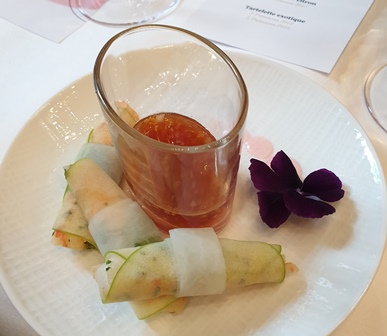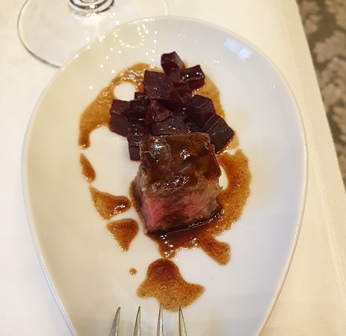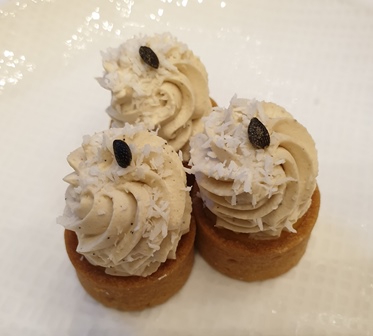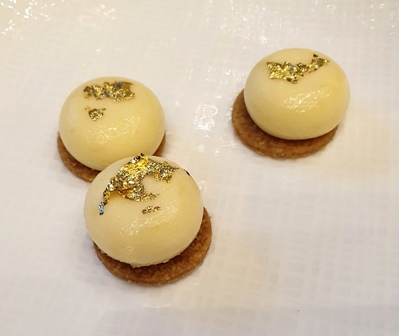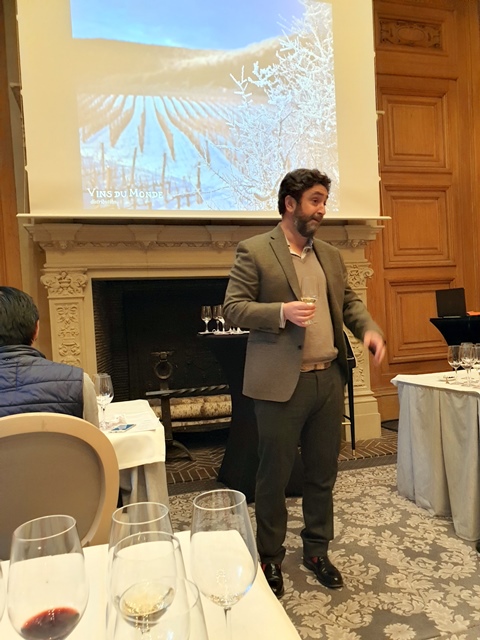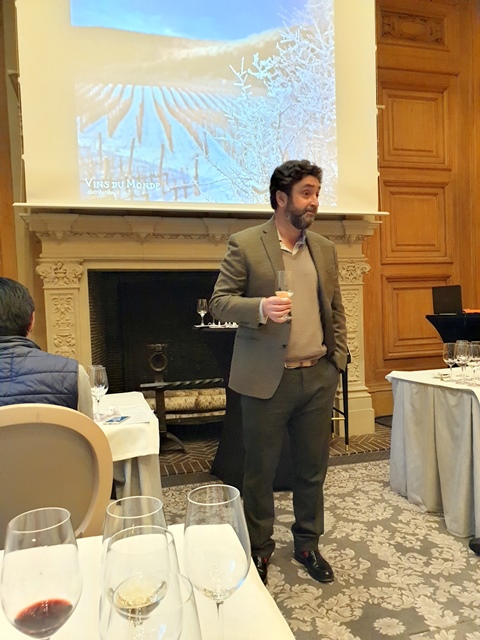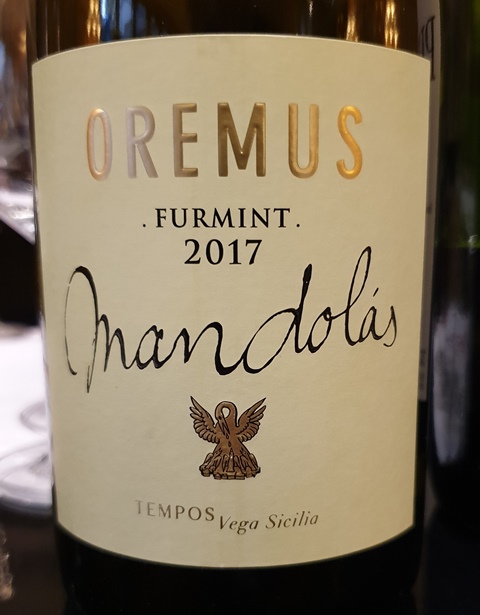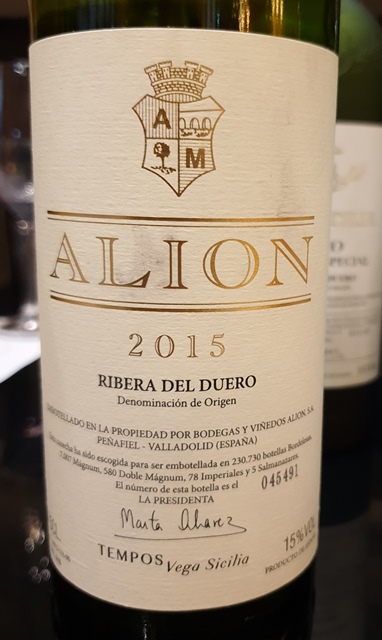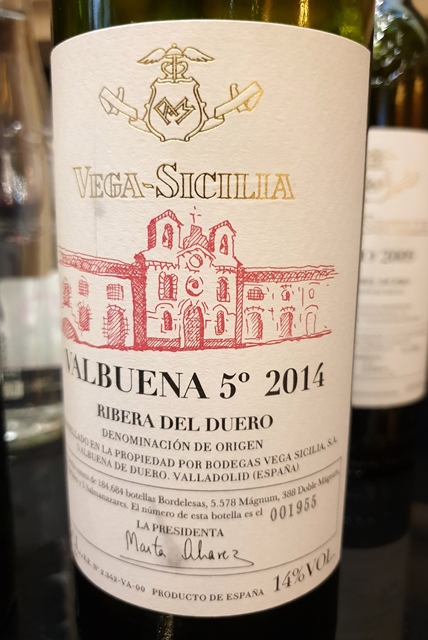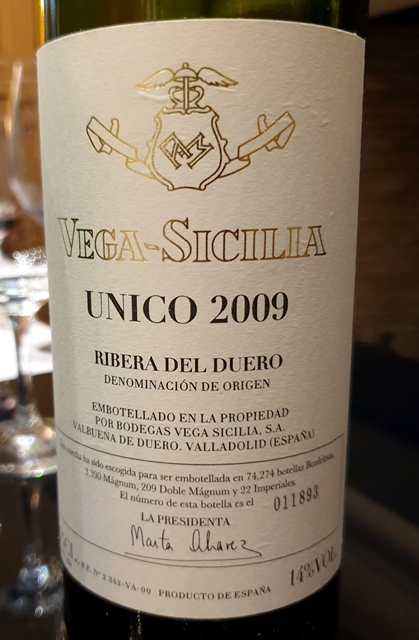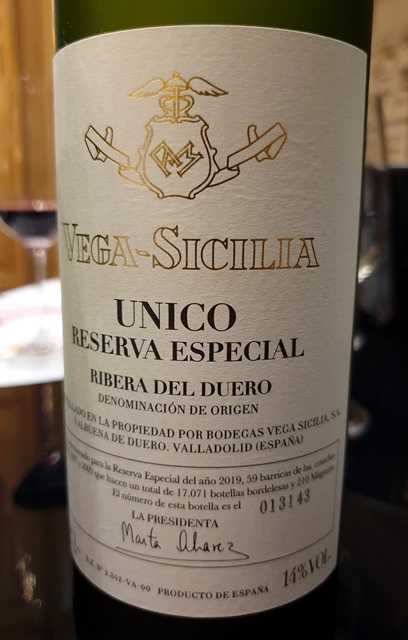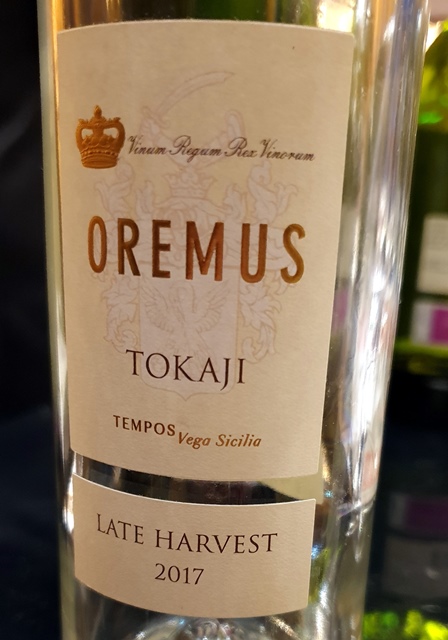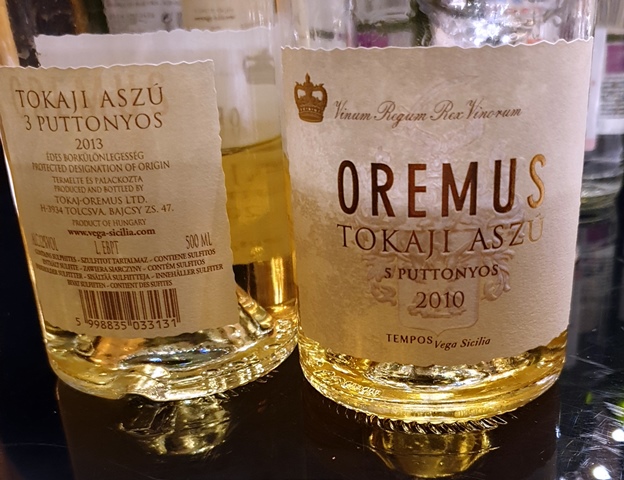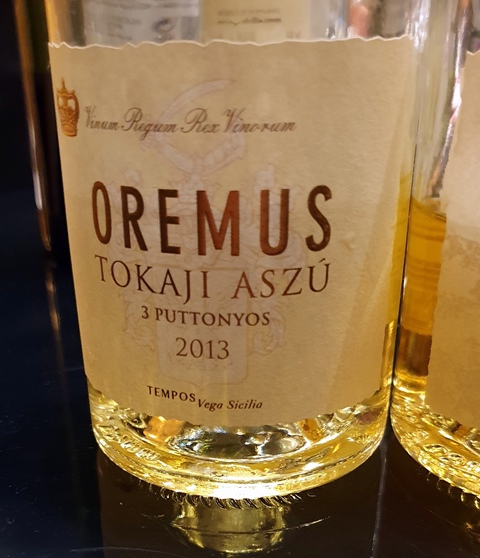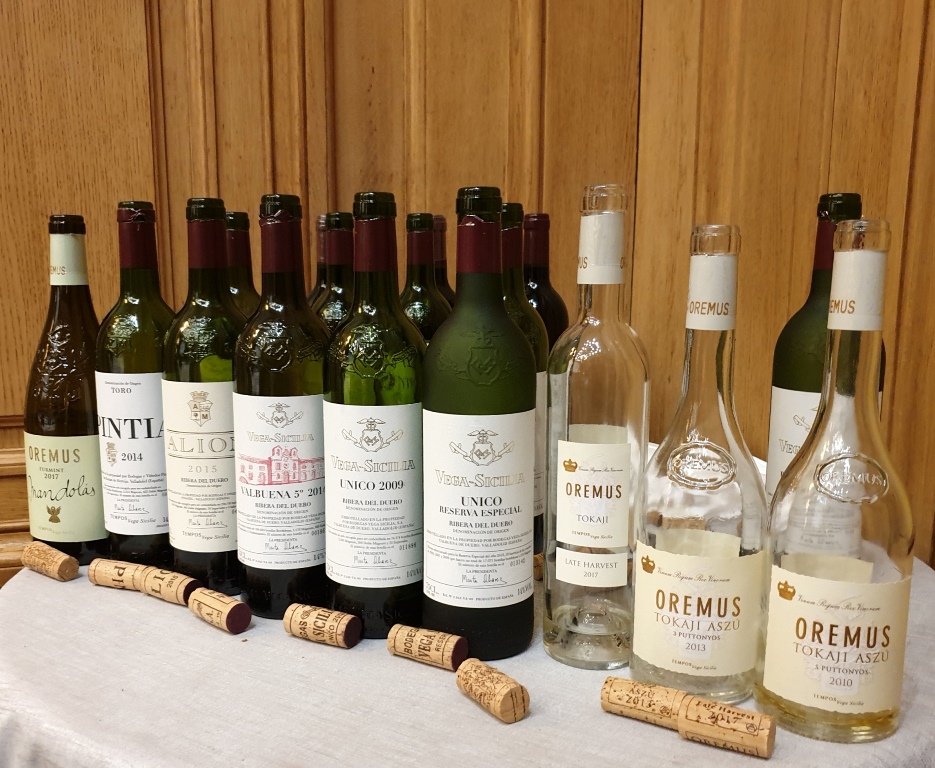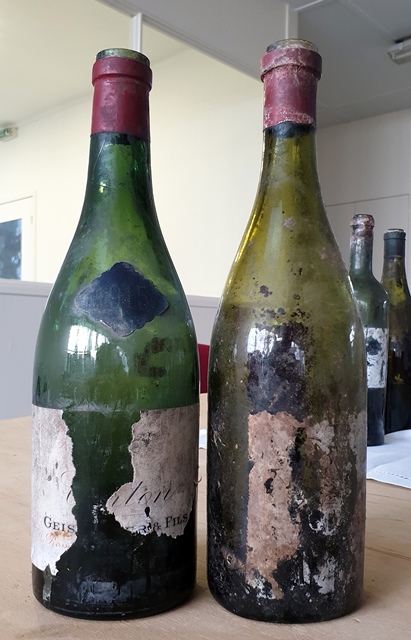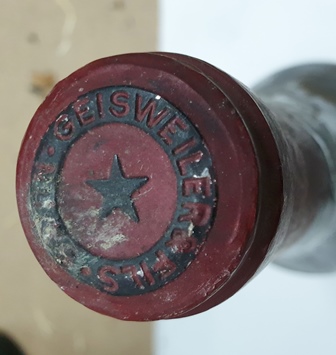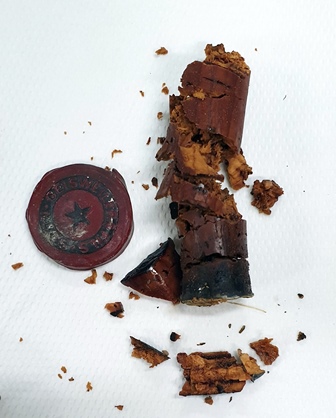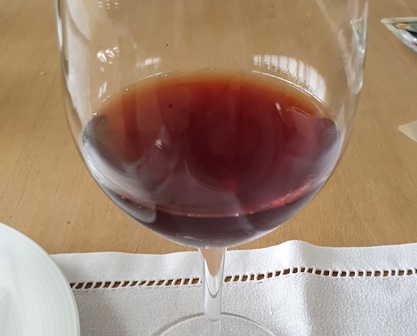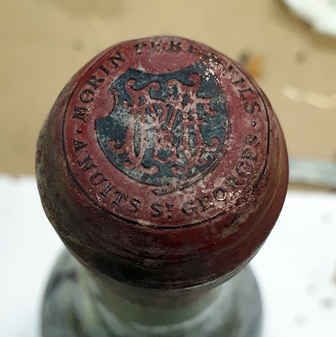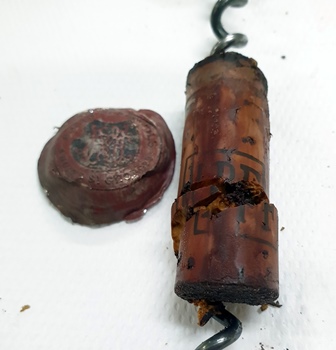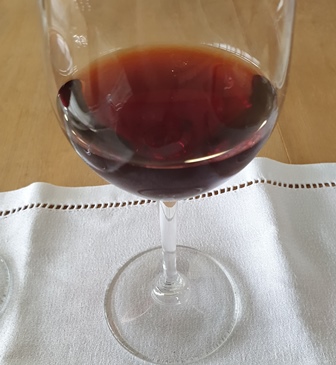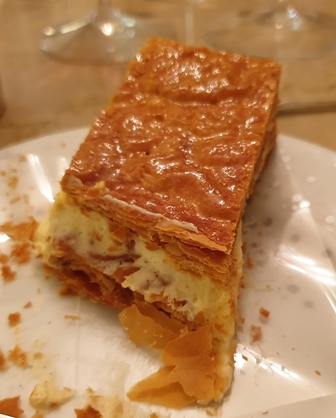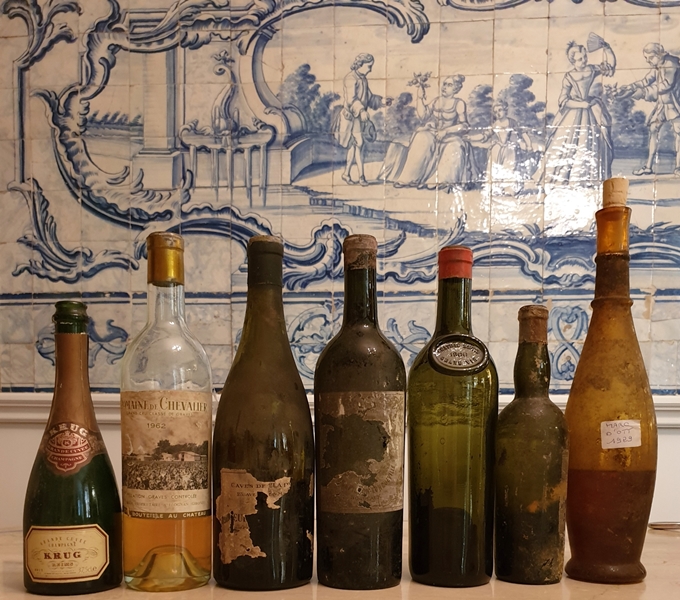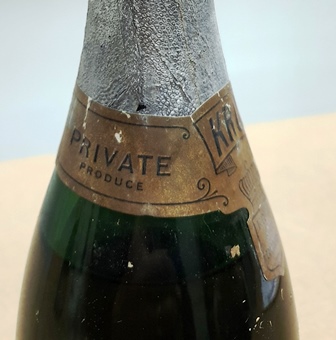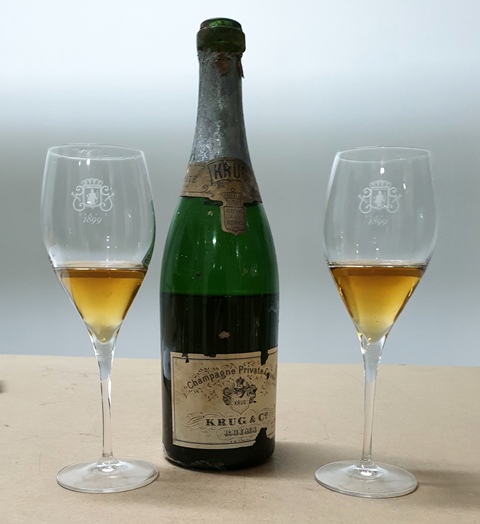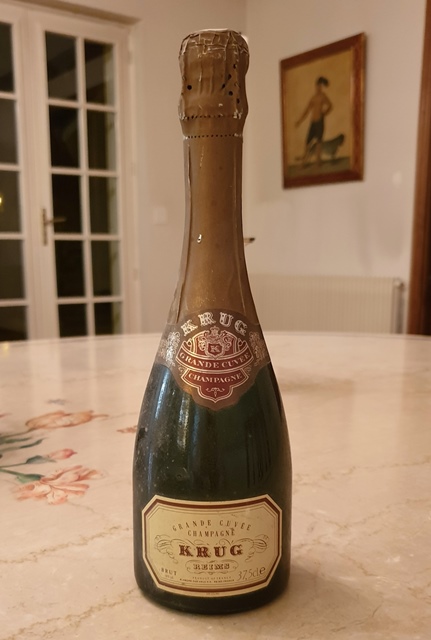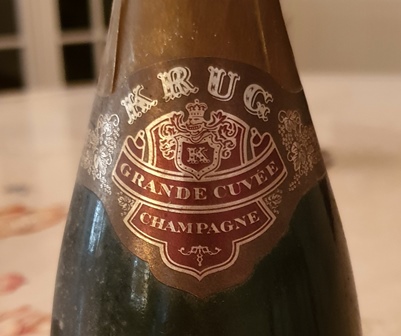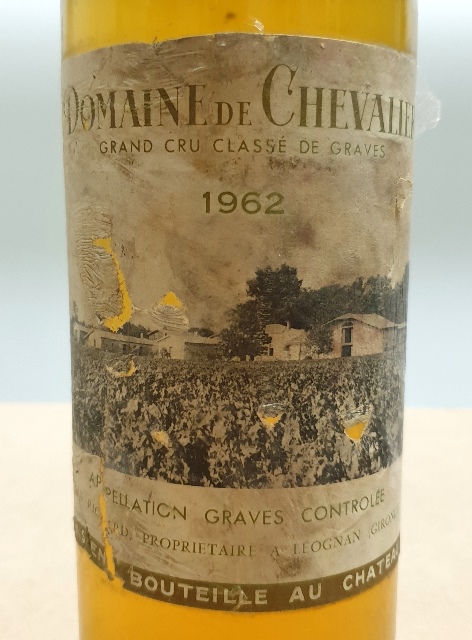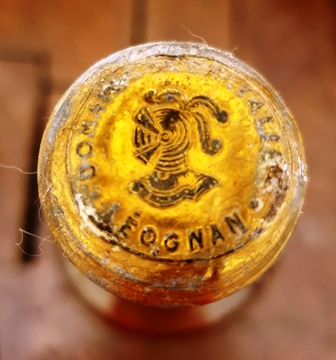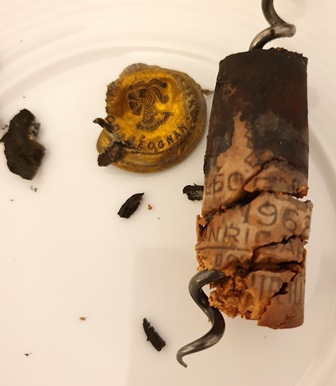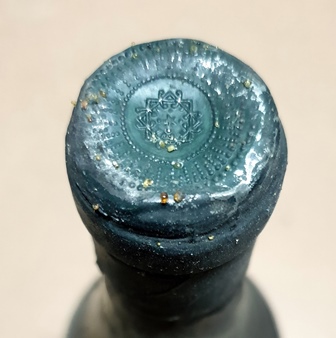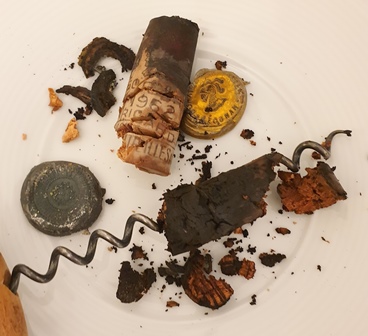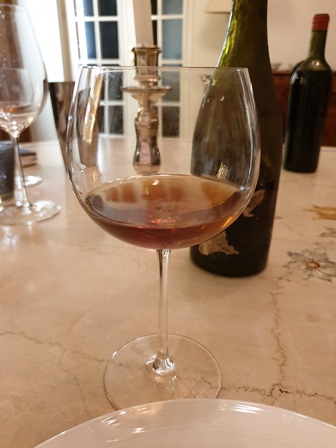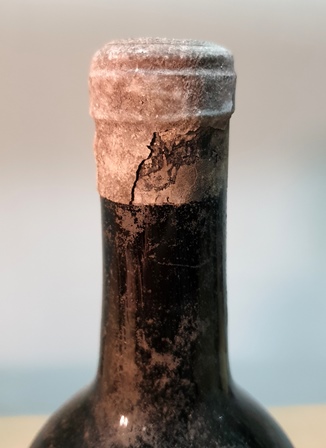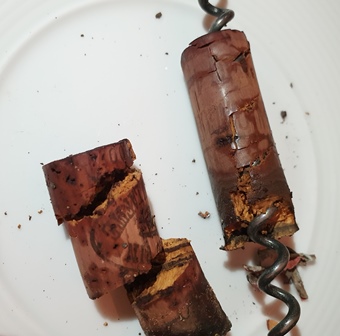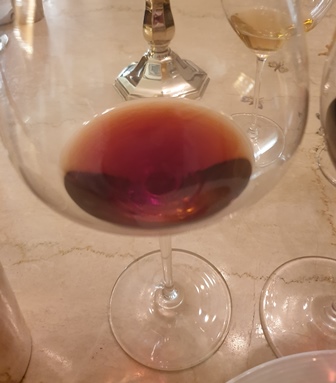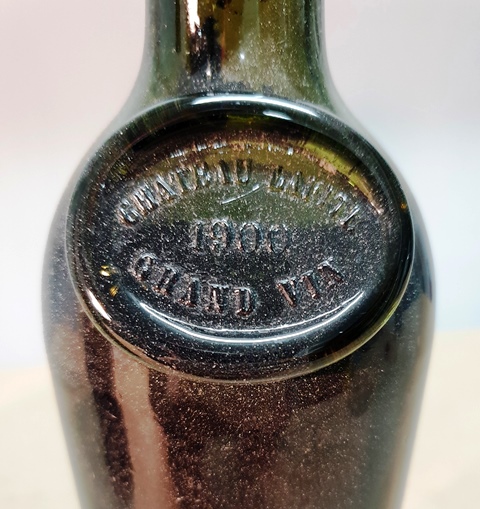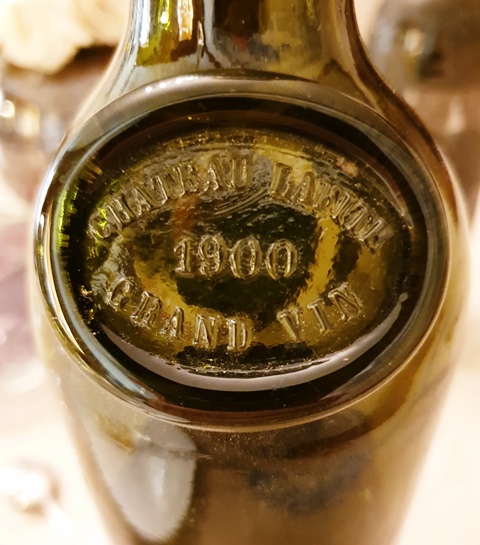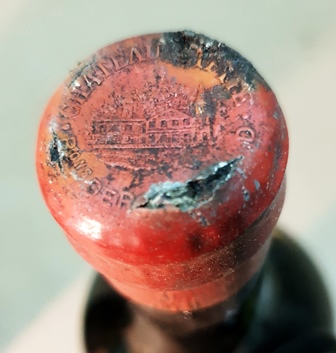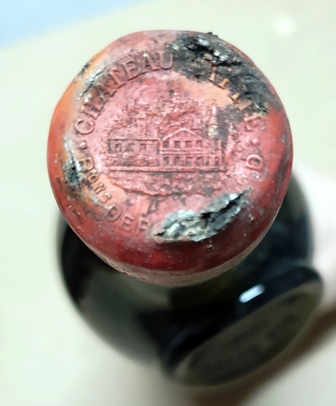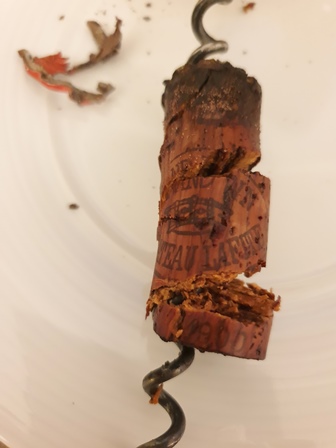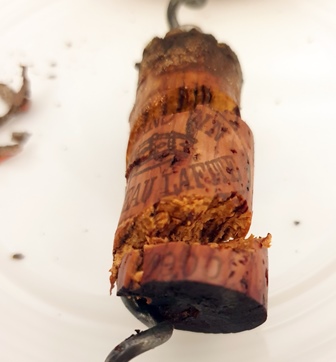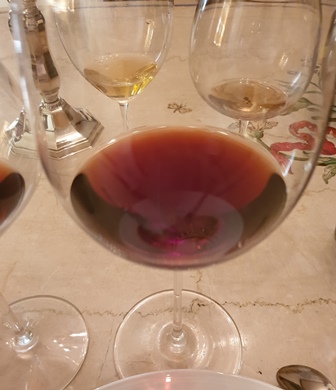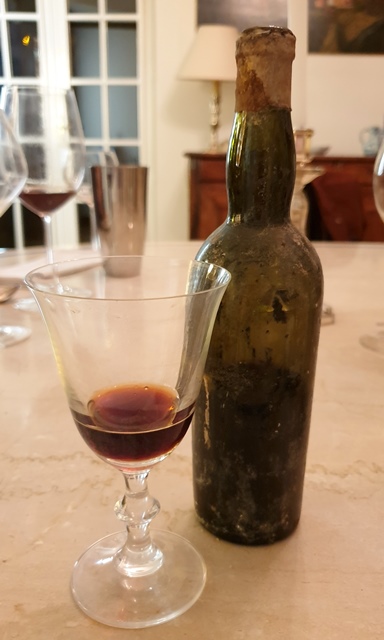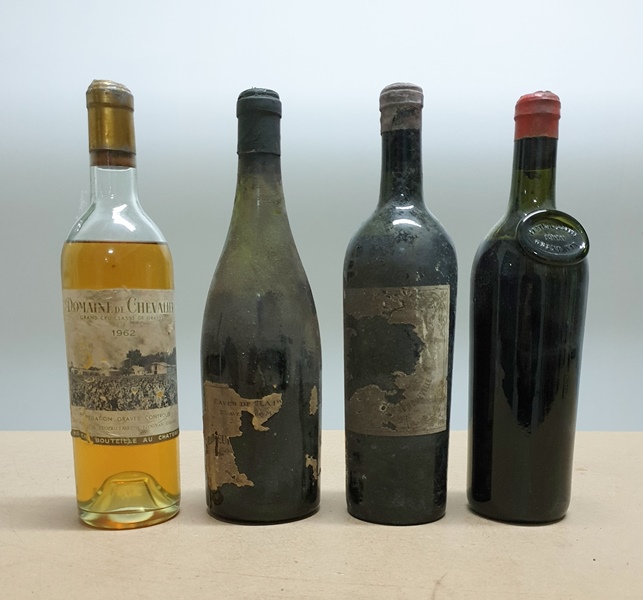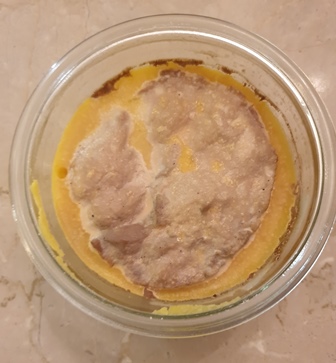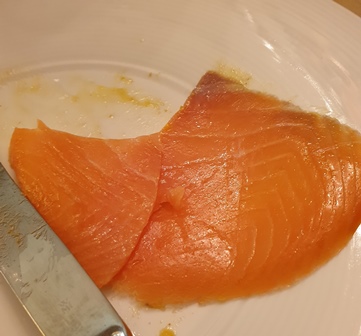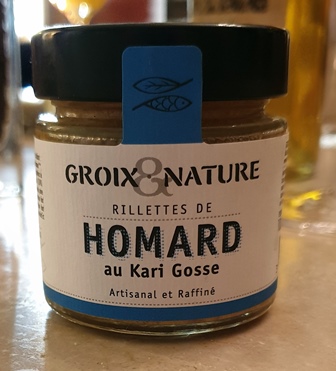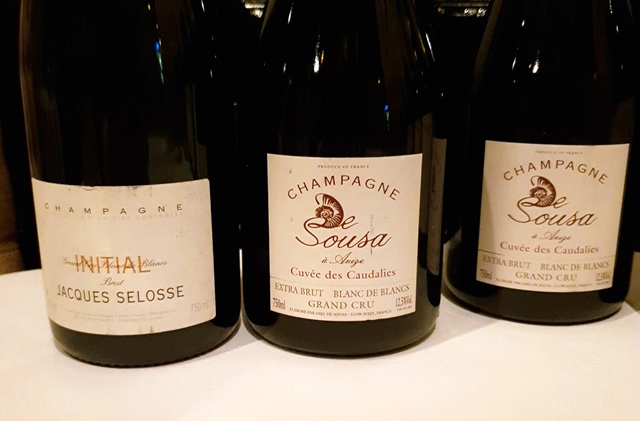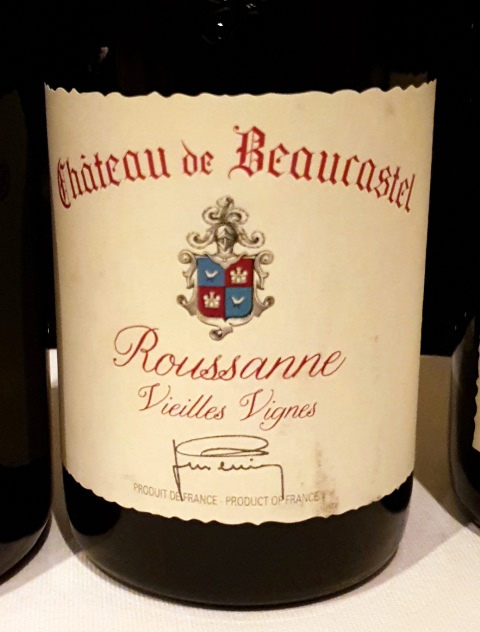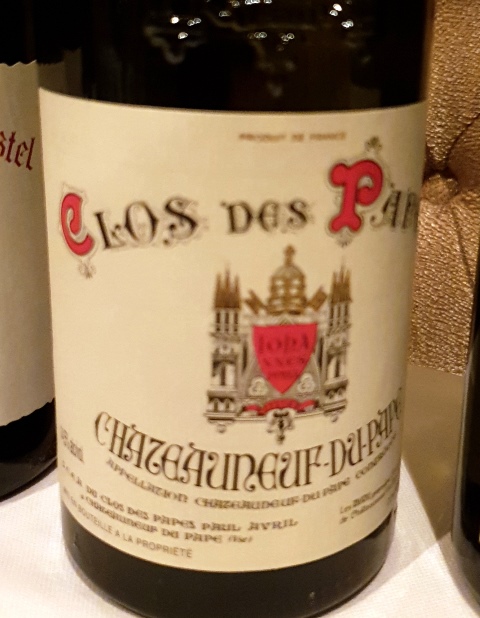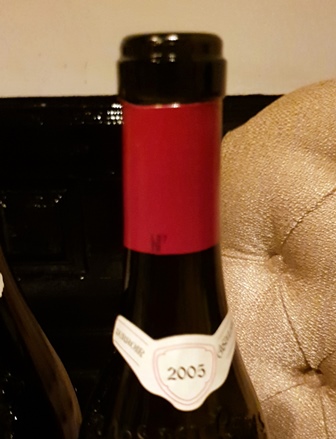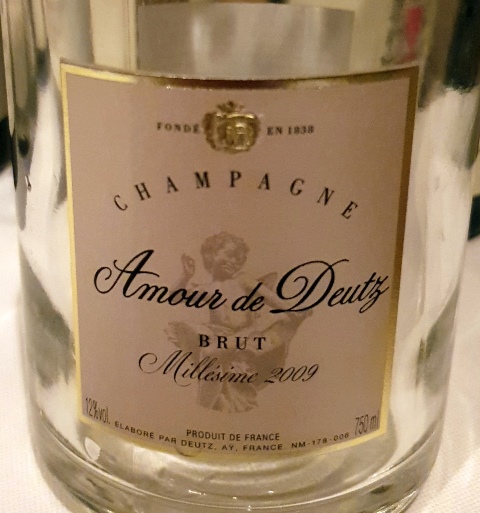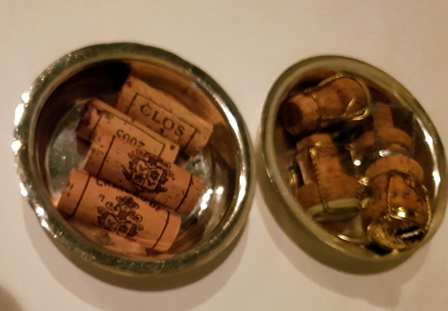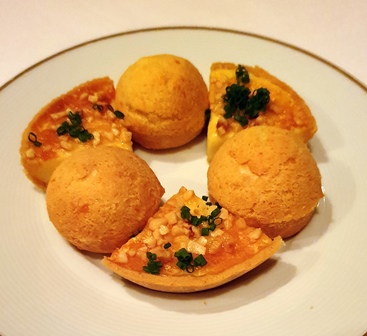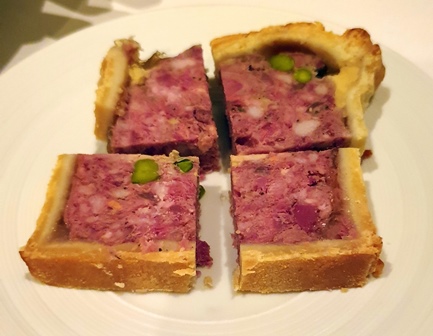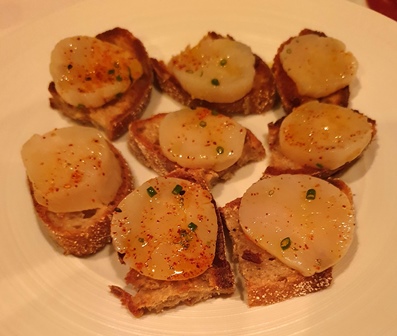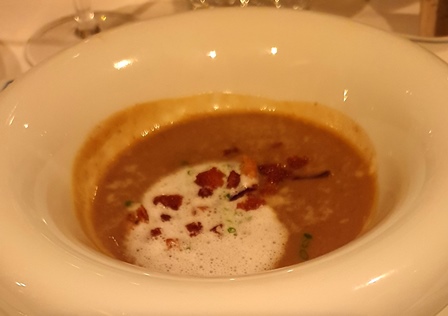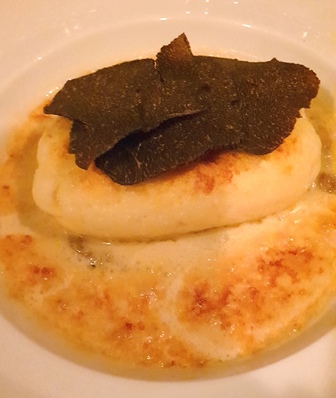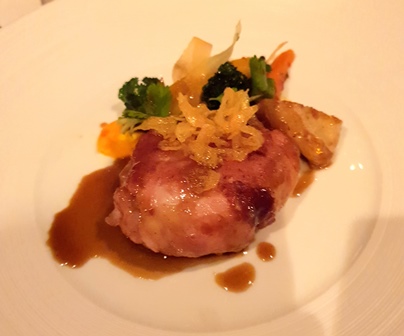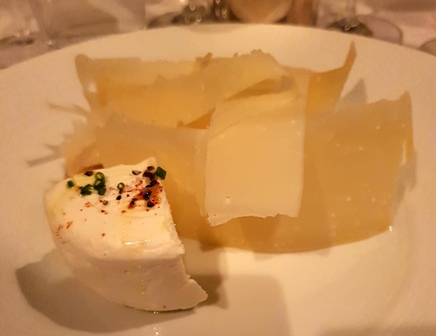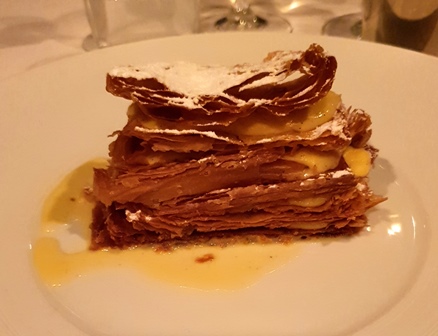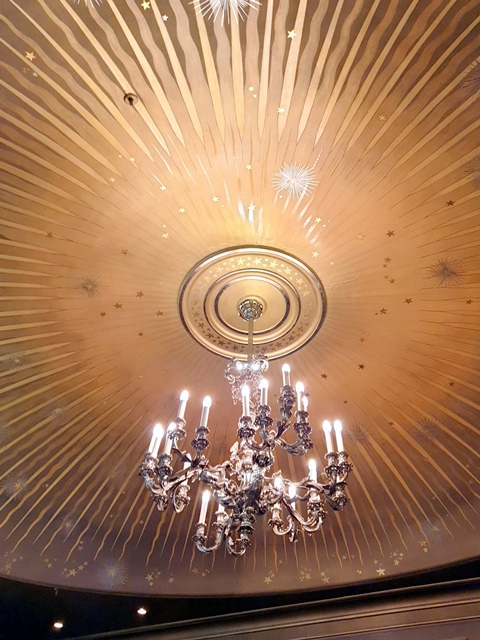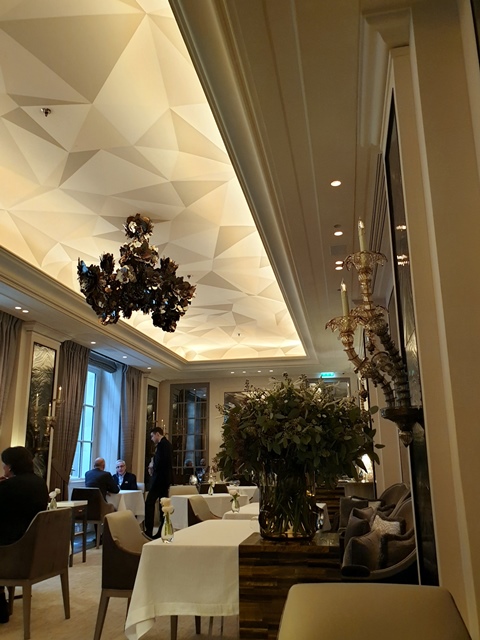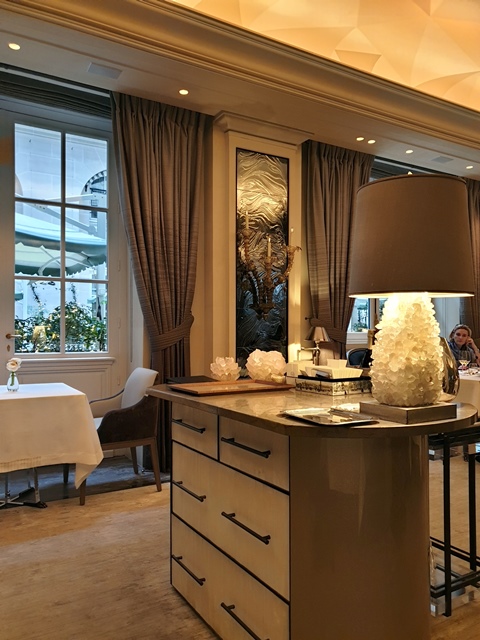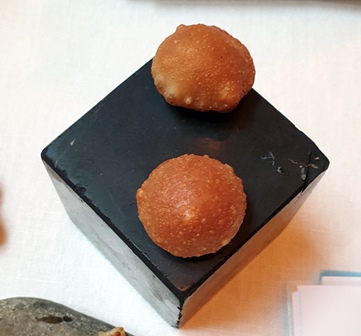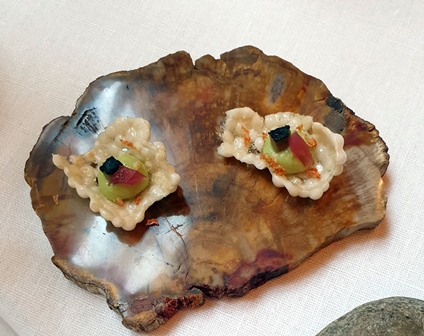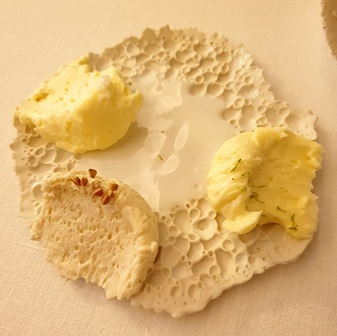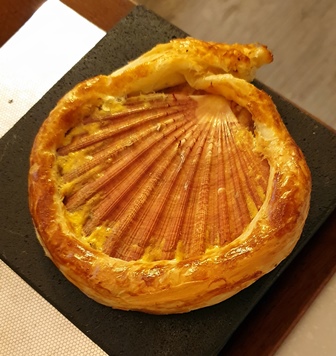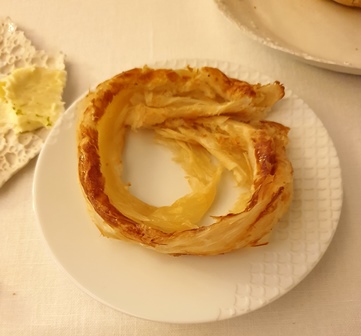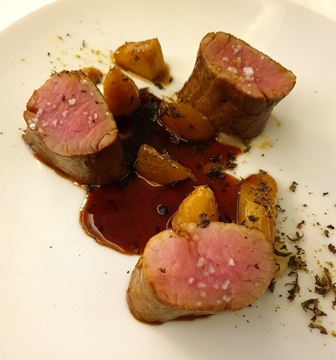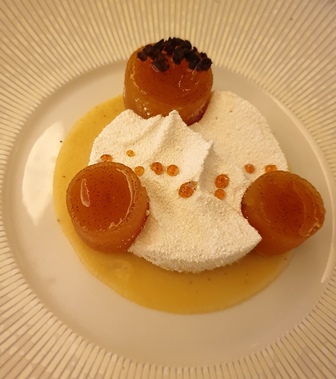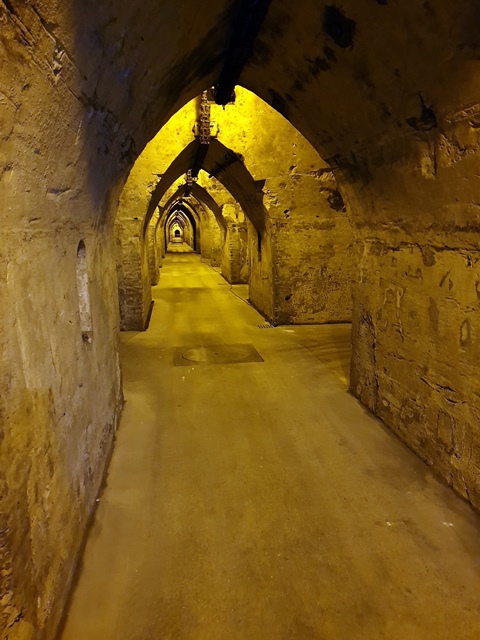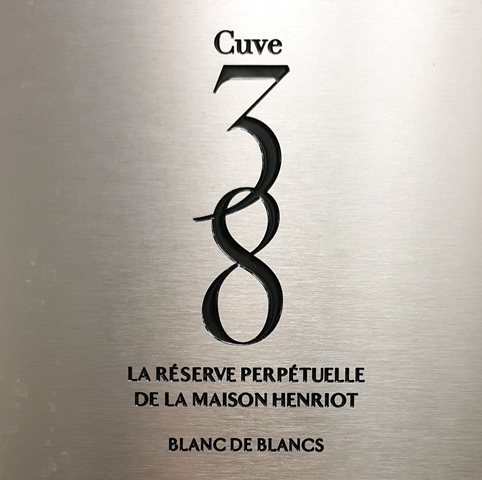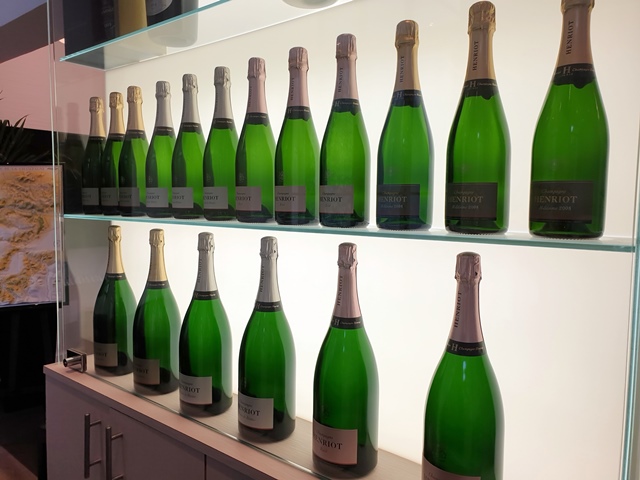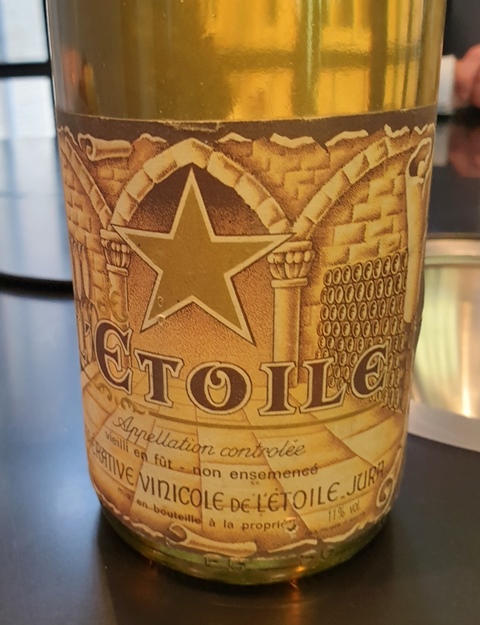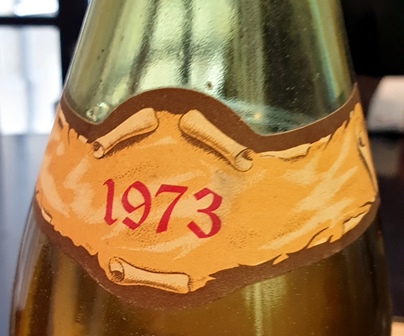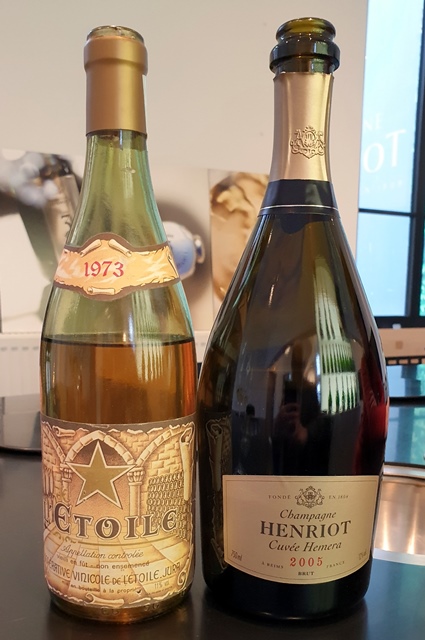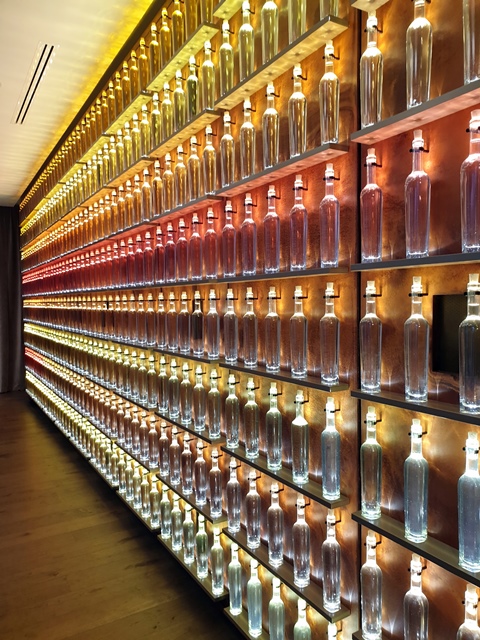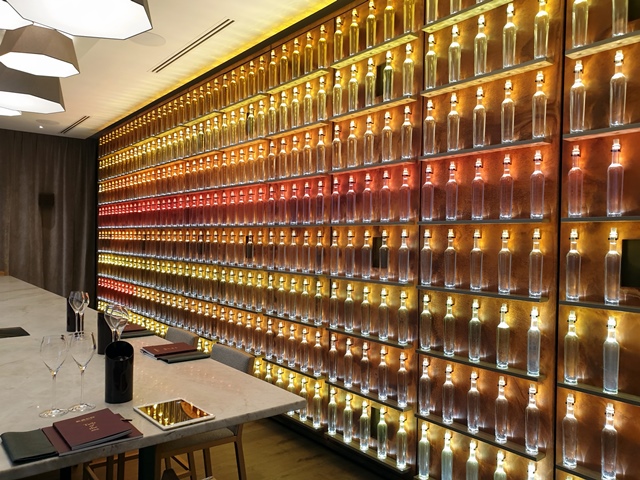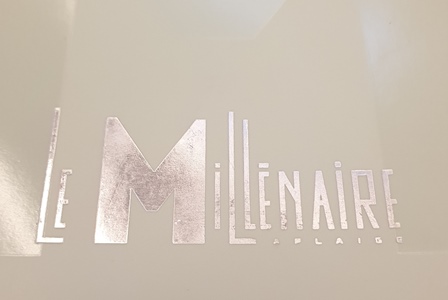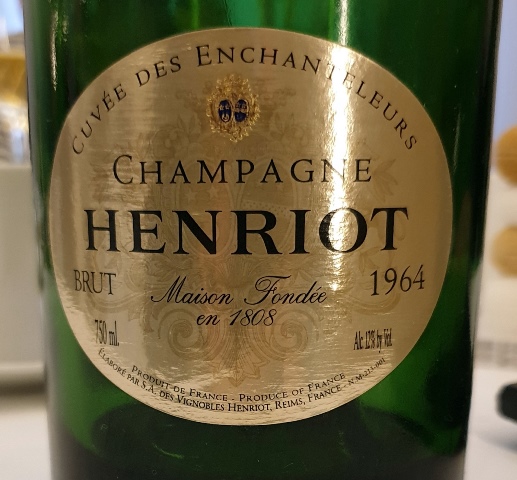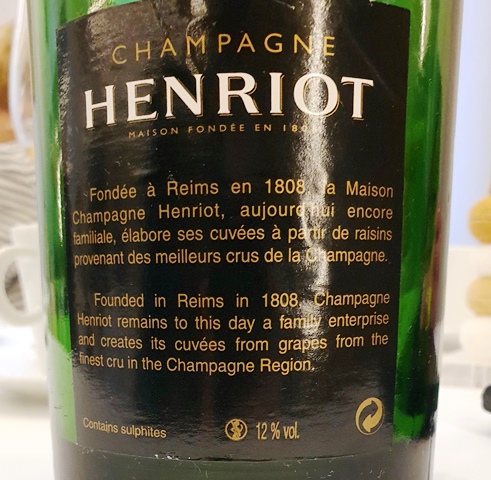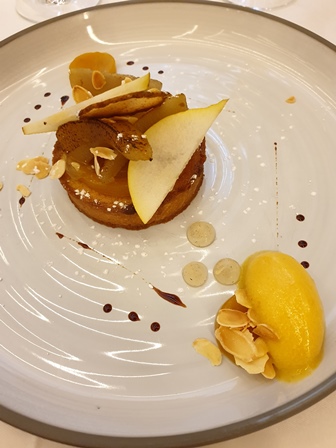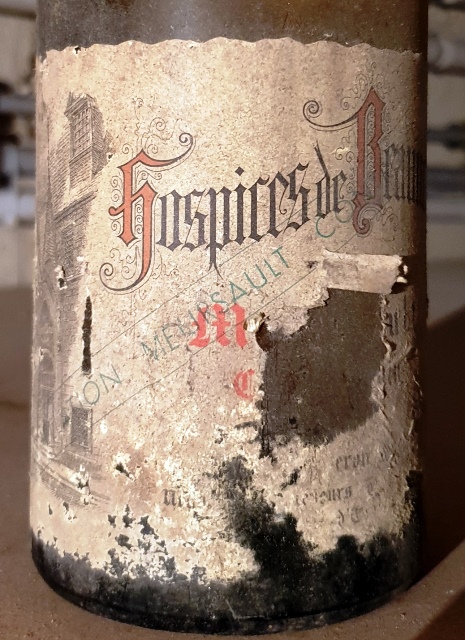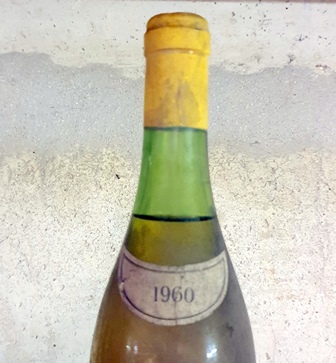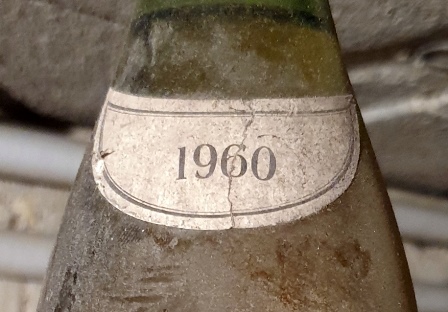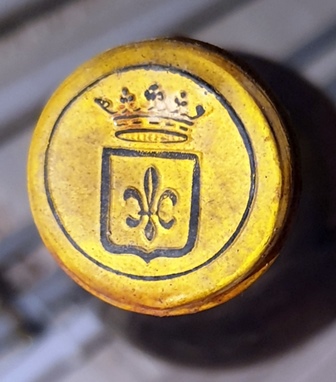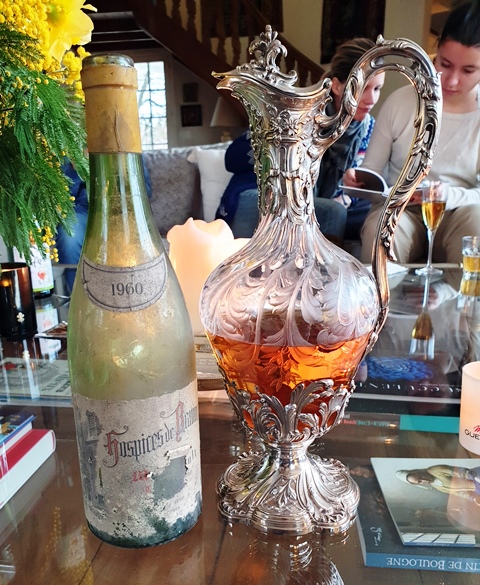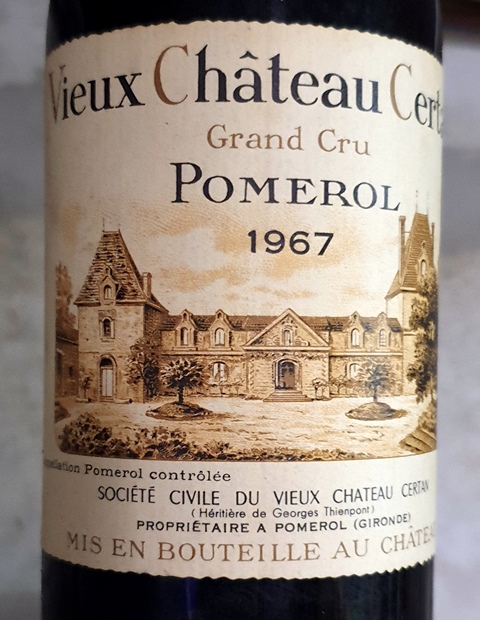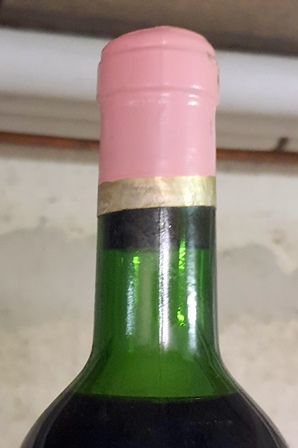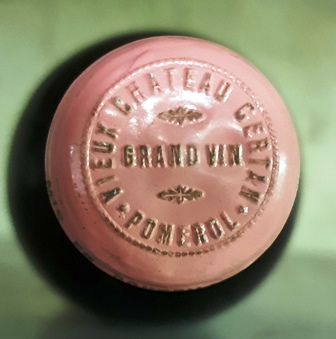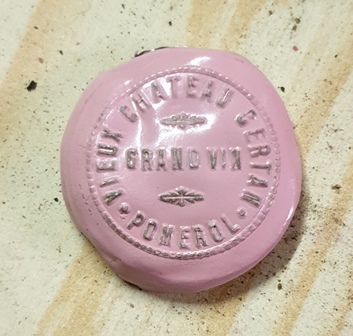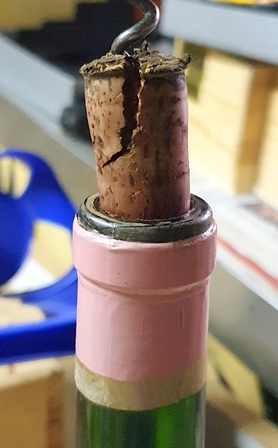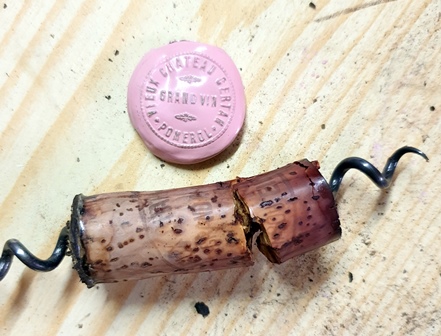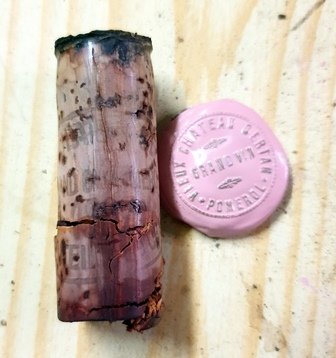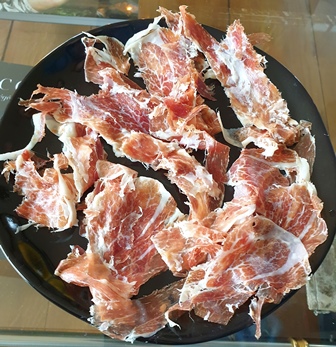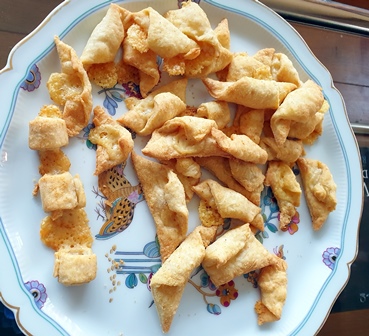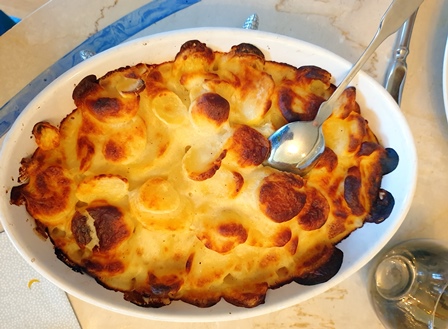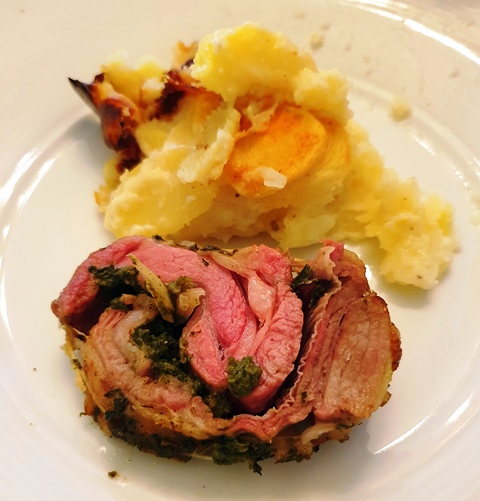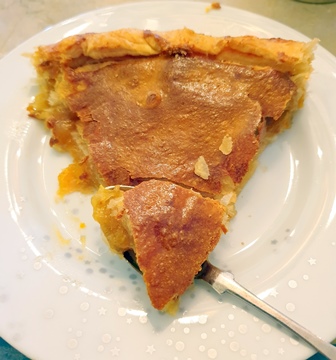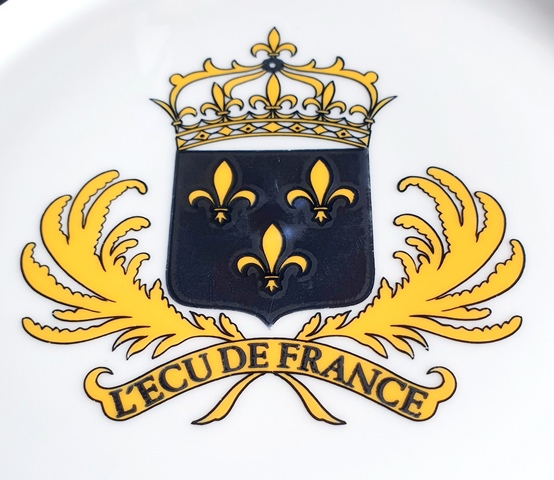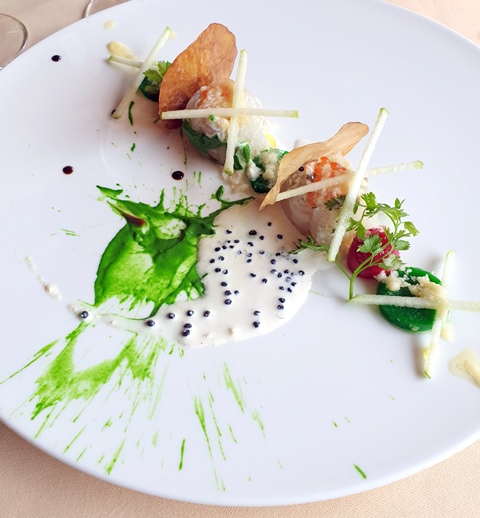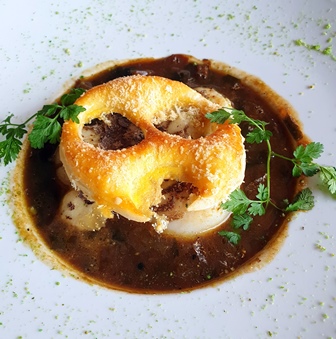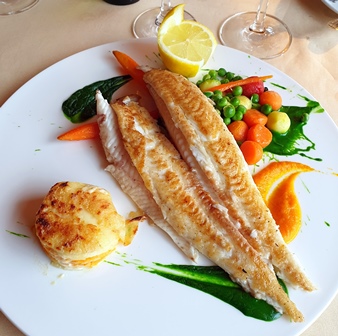A dinner is held at the Cave d’Exception of the Hotel de Crillon. The design of the menu should have been done with Christopher Hache whose talent I appreciate, but along the way it is with Boris Campanella who oversees the kitchen of the Ecrin that the development of the menu was made. Having had lunch at L’Ecrin, the hotel’s gastronomic restaurant, to try a few dishes, I could check that dinner will be in good hands.
At 4 pm I am greeted by Xavier, the nice sommelier who had officiated at a dinner that I made in this same place. He put all the bottles up yesterday, so that the possible lees are deposited. I start opening the wines in the service order. The 1951 Laville has an intense nose, the 1961 Charlemagne Corton has a generous fragrance. The 1971 Petrus has a rather imperfect nose, but there is no indication that he will keep it. Latour 1947 is a bomb of fragrances. It is absolutely incredible that the cork of Chambertin 1911 comes with a normal corkscrew. It is of extreme density and what is crazy too is that the level in the bottle is two centimeters from the cork. We can read on the cap: « decantage cap ». What does it mean, I do not know. The 1969 Richebourg’s nose is typical of the Romanée Conti estate. This wine promises. The German Moselle wine of 1959 has a delicate nose that does not allow to know if the wine is a dry wine turned sweet or a sweet wine. We will see this in due course. The Yquem 1918 has a reconditioning plug in 1986. Its scent is between the Yquem become dry and the Yquem remained soft. There are exotic fruits in its discreet perfume. The shape of the bottle of Solera 1836 questions: is it a port or a Madeira? We smell with Xavier and the doubt does not exist, it is a Madeira with the perfume of a crazy freshness. This is the most incredible scent of all open wines. In the perfume stage alone, without having tasted the wines, the classification would be: 1 – Solera 1936, 2 – Latour 1947, 3 – Richebourg 1969, 4 Chambertin 1911. But this classification does not prejudge in any way the performance of the wines at the table. Pétrus 1971 is the only wine for which there may be a slight doubt.
There are so many beautiful surprises by opening that I will rest quietly in a lounge of the hotel, with a craft beer suggested by Xavier. I had asked Xavier to open the champagnes in advance. He brings me the plug of Dom Pérignon 1988 disgorged in 2002 which smells cork. The cork as it appears seems more like 1988 than 2002 and as I had recently drunk a 1988 with a nose of cork, here is an enigma. Is the Oenothek not an Oenothek? This is the only wine I will taste before the dinner. In the mouth we do not feel the cork and we wonder if it’s Oenothek.
We are eleven, including four women. There are seven newbies for four regulars including me. The new ones are in the majority. Two Swiss came specially for this dinner. A regular came from Bordeaux and had to undergo yet another blackout at Montparnasse station. An Asian couple had canceled for fear of Parisian riots amplified on global television. One of the newbies warned me shortly before 8 pm that he will not join us until 10 pm. He was kept most of the meal and wine.
I added to the program a Champagne Henriot Cuvée des Enchanteleurs 1998 to start the appetizer on pleasant notes and easy access. This merry champagne is a good introduction, with a nice chew.
The menu created for this dinner by chef Boris Campanella is: aperitif around winter vegetables / raw Saint-Jacques de Bretagne, Sologne caviar / saint-pierre from our coasts, celeriac from Ile de France / rouget single-sided, beef marrow, juice with giblets / lobster pudding, carapace floret / milk-glazed veal fillet, tuberous chervil / duck foie gras poached au naturel / Stilton blue cheese / roasted and marinated mango with saffron pistils / financier hazelnut liquorice.
Champagne Dom Pérignon enoteca 1988 (disgorged in 2002) has a slight nose cap that everyone feels. Fortunately the mouth is not deviated. He does not have the liveliness that one would expect from an oenotheque. It neighbors on the scallops with Champagne Dom Pérignon 1964 which has few bubbles but a sparkling which is present. This champagne is round, greedy, charming and fulfilling. It is full of sun and full in the mouth and very curiously, the 1964 highlights the 1988 so that it expands. The 1988 is gaining momentum. The raw shell is delicious, but a small blow of torch has burned slightly, which deviates its taste.
Château Laville Haut Brion 1951 is incredibly fresh and intense. He is upright, clear, lively and deep. It would be impossible to give him an age. Beside him, the Corton Charlemagne Rapet Father and Son 1961 is all round and charming. It’s a wonderful generous wine and choosing the preferred one of these two beautifully made wines is very difficult. One would be tempted by the charm of the Burgundy, but the sharp freshness of the Bordeaux brings us back to him. Both wines are at the top of their art and Saint-Pierre with celery is a delicious dish.
All the guests are amazed by the way the red mullet beautifully treated with its sauce and marrow enhances the Pétrus 1971. It’s fascinating. Pétrus is rich, truffled grain, long and racy without being thundering. It is a great wine, according to its legend.
The lobster pudding is very unexpected but remarkable. Château Latour 1947 has an intense fragrance. He is imposing and everything seems easy to him. It has a nice acidity and its length is endless. If the Petrus is a distinguished and elegant noble person, Latour is Fanfan la Tulipe by Gerard Philipe. He has an amazing charm.
The bottle of Chambertin Chauvenet merchant at Nuits Saint Georges 1911 is of rare beauty. The veal is an incredible fondant. This is the ideal dish to highlight the wine of 107 years that has no wrinkles. What certainties fall on the longevity of wines! I imagined by composing the list of wines that this 1911 would be the winner. I was right. Straight, perfect, balanced like a forty years old wine, this wine is a lesson about how wines were made over a century ago. The terroir earthy character of this wine is exciting.
The poached foie gras is one of my coquetries to accompany the wines of the Romanée Conti estate. This one, composed by Boris Campanella is superb and its simplicity cannot hide an immense talent. The Richebourg Domaine de la Romanée Conti 1969 has a scent that moves me to the highest point because it is at the top of the perfumes of the estate’s wines. The wine is very emotional and despite so many other great wines it will be the first in my vote, because its delicacy is the typical example of the refinement of the estate’s wines. What a great wine with delicate suggestions of subtle roses and discrete salt!
The Piesporter Eremitenglöckchen Bansa and Sohn N. Fromm Mosel 1959 is a wine that I added. I do not know anything about it. It seems most likely that it is a dry wine that has taken sweetness. It is way above what I imagined because it has a charm and balance of great precision that make it an ideal stilton partner. His delicacy and strangeness delight us.
The stilton will continue on its way with the 1918 Château d’Yquem which has obviously eaten its sugar, as they say. It is very dry and a little withdrawn. It has great lightning especially on delicious mangoes, but it is the only wine that I consider below what can be expected.
The financiers are a rare greed. There are only two per person, and we would like a thousand! La Soléra 1836 is a Madeira that combines a luxuriant generosity with a very dry taste that we love on its part when we regretted it with the Yquem. This wine is the thousand and one nights, it is the absolute pleasure that I would have willingly put first if the Richebourg had not been so moving.
We vote for five wines out of the eleven (the Henriot added is not on the voting sheets) and we are eleven to vote. Five wines had the honors of being named first, Chambertin 1911 four times, Petrus 1971 three times, Richebourg 1969 twice and Dom Pérignon 1964 and Latour 1947 each once. Nine out of eleven wines received votes which is a good score.
The ranking of the consensus would be: 1 – Chambertin Chauvenet trader at Nuits 1911, 2 – Pétrus 1971, 3 – Richebourg Domain of Romanée Conti 1969, 4 – Champagne Dom Pérignon 1964, 5 – Soléra 1836, 6 – Château Latour 1947.
My classification is: 1 – Richebourg Domaine de la Romanée Conti 1969, 2 – Solera 1836, 3 – Chambertin Chauvenet trader at Nights 1911, 4 – Pétrus 1971, 5 – Champagne Dom Pérignon 1964.
The classification of the most beautiful chords would be mullet with Pétrus, transcendental, poached foie gras with Richebourg then the lobster pudding with Latour. All the dishes were remarkable like the veal of an infinite accuracy, as the mangoes so well presented melting them too and like these financiers to die for.
The atmosphere could not be more smiling, teasing, and I felt that it seemed to all of them almost natural that all the old wines were so perfect. We quickly get used to excellence! During the meal several plans have been developed so that we can see each other around beautiful bottles. So, let’s do it soon!
(to see pictures, please go to the article in French)























































